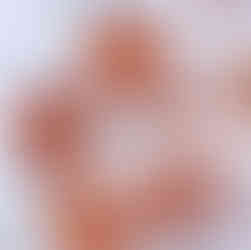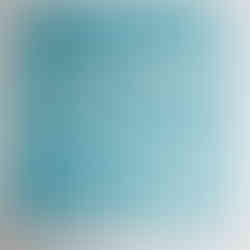Dyeing and Eco-printing with Coreopsis
- annacarolynmeier
- Nov 13, 2022
- 4 min read

Growing Coreopsis
I’ve been growing and dyeing with a few different varieties of coreopsis for the last 3 years but this was the first summer where I had an abundance of flowers, and time to experiment with immersion dyeing and eco-printing with them. This is a recap of what I’ve learned so far.
The first year I grew just dyer’s coreopsis (Coreopsis tinctoria) and I got only a few very stubby plants and a handful of flowers because my garden soil was extremely dry and nutrient poor. Every year my soil has gotten better, and this year my dyer’s coreopsis did the best they ever had. I grew some from seed I got from Botanical Interests, as well as some some seed from Grand Prismatic Seed which had a combo of red and yellow flowers. I’ve seen a lot of information on the internet saying that coreopsis are plains wildflowers that are adapted to dry sandy soils, but in my experience they have certainly preferred rich garden soil.
Three varieties of dyer's coreopsis that I grew this year
While I struggled over the years to grow dyer’s coreopsis, I also started some Coreopsis lanceolata ( a perennial variety of coreopsis) from seed and got an abundance of plants. The first year the plants put on a lot of green bushy growth but only a few of them flowered. After eco-printing with those few flowers though, I was hooked! This past summer, their second year, they really took off. I transplanted them to a more fertile and sunnier bed, and they completely took over. I got SO MANY flowers.

I saved a large tote bag full of dried flowers for immersion dyeing and pressed hundreds of others for eco-printing with. I got about three times the amount of flowers from the Coreopsis lanceolata than the dyer's coreopsis. I also have another variety of the Coreopsis lanceolata that I experimented with this year. Unfortunately I lost the plant tag (anyone else terrible at keeping track of their plant varieties??) and can’t remember what it’s called, but the flowers are a very pale yellow green with dark burgundy in the center. They also eco-print beautifully and are perennial as well.
A variety of Coreopsis lanceolata that I grew with dark red centers
Eco-printing with Coreopsis
The first time I tried eco-printing with coreopsis I used a soy milk binder instead of a traditional metallic mordant. The flowers printed but I didn’t get the vibrant colors I was hoping for. Once I started to use an alum mordant I got much brighter oranges and yellows like I had hoped for. I find that all the coreopsis flowers eco-print beautifully, but while the dyer’s coreopsis usually prints orange on both protein and cellulose fibers (although no always), I’ve found the Coreopsis lanceolata prints differently depending on the fiber type. On silk the flowers print yellow, on wool they print deep orange, almost red, and on plant fibers they print orange. The other variety of lanceolata that I have, with the burgundy center, prints yellow, with blue tinges.
Left top: Coreopsis lanceolata eco-printed on wool. Center top:Coreopsis lanceolata eco-printed on cotton. Right top: Dyer's coreopsis flowers and stems eco-printed on cotton. Bottom left: A variety of coreopsis flowers eco-printed on cotton. Bottom center: My son wearing a cotton outfit eco-printed with a variety of coreopsis flowers. Bottom right: Japanese indigo and dyer's coreopsis flowers hammered onto silk.
I’ve found that the leaves and stems of the dyers coreopsis print very well while the lanceolata stems and leaves give much fainter prints. One of the other issues I’ve encountered with printing coreopsis flowers is that there is such a wealth of dye in them that the prints often bleed after being hung to try. I’ve found a few work-arounds for that which you can find in my eco-print ebook.
A variety of fabrics eco-printed with dyer's coreopsis flowers and then dyed with indigo.
Dyeing with Coreopsis
This was my first year immersion dyeing with coreopsis flowers. I used the lanceolata since I had such an abundance, and I wanted to save my dyer's coreopsis for bundle dyeing. I found that the strongest colors came from fibers mordanted with alum (I used aluminum potassium sulfate for protein fibers and aluminum acetate for my cellulose fibers). The results really varied depending on the mordant and fiber type. Mordanting with alum yielded orange on protein fibers. Those same fibers without any mordant dyed yellow. The protein fibers also had a more saturated color while the plant fibers turned out more muted. Next year I want to play around with mordant printing with this dye and using that variation to create some interesting patterns.

Left: Freshly picked Coreopsis lanceolata flowers next to ones that have already been dried. Center: Dried Coreopsis lanceolata flowers ready for dyeing Right: Dyeing fabric in Coreopsis lanceolata dye

Overall I love the colors from dyer’s coreopsis and I’ll continue to grow it and hope that I find a way to get it to thrive in my garden, but in terms of ease and yield I really prefer the perennial coreopsis. I only had to start it from seed once (compared to dyer’s coreopsis which is annual and must be started again from seed each year) and I find that it is well adapted to my soil and the super hot and dry summers we have here. I’m excited to continue to add new varieties next year, and to continue to experiment with them. They are all beautiful cut flowers, bring pollinators to the garden, make gorgeous dye colors and eco-prints, and with the right mordant they are quite color-fast. I hope you’ll add some to your garden, or if you already use coreopsis for dyeing, tell me about your experiences, I'd love to know!
Happy dyeing friends!









































Hi! I am curious how the eco prints hold up when washed?
Thank you so much. This information is so helpful. Exactly what I needed. I am realizing I have a dye garden, but not very well planned or understood. I have grown coreopsis for a few years and you IDed them as lanceolata. I planted madder seeds four years ago and they are spreading like crazy. This is my first year growing indigo and I especially liked your video on fresh leaf dyeing. I harvest so much coreopsis and oxalis in the winter. I have much more than I can use. Thanks again for all your information. Cidne Hart, Los Angeles